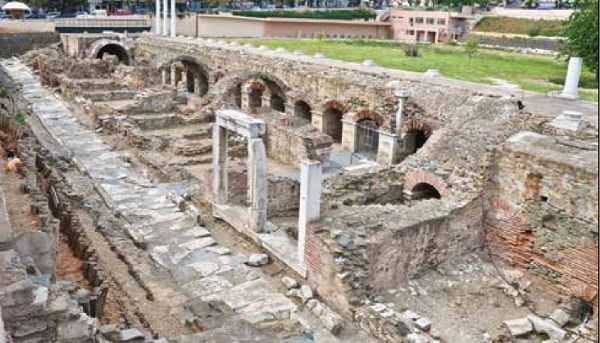
Thessalonica: The City and the Church
See Introduction to 1 Thessalonians.
Author
The letter claims to be written by “Paul, Silas and Timothy,” although the shift to the first-person singular (2:5; 3:17) makes it clear that Paul is the main author. Some have questioned whether Paul wrote 2 Thessalonians for at least four reasons: (1) Its tone is cold and authoritarian compared to 1 Thessalonians. (2) The eschatology of 2:1–17 differs from 1 Thess 5:1–11. (3) It sounds like a pseudonymous author wrote 2:2 and 3:17. (4) The lexical and literary similarities with 1 Thessalonians are too great to be authentically Pauline but stem from literary dependence by a different author.
An evaluation of these objections, however, shows that they are overstated and unconvincing. (1) Paul restricts his harsher language for unbelievers who are persecuting the church and believers who continue to live in idleness; he affectionately addresses the majority of the church. (2) There are many similarities in how both letters describe the day of the Lord (e.g., that day involves surprise and judgment for unbelievers but anticipation and vindication for believers), and the differences involve not contradictions but clarifications that reflect the specific concern Paul addresses. (3) In 2:2 and 3:17, Paul naturally responds to the possibility of a forged letter circulating in his name. (4) The similarities in vocabulary and form between the two letters are great enough to conclude that the same author wrote both but not so great that we should view 2 Thessalonians as a Pauline forger’s slavish imitation. There are no compelling reasons, therefore, to reject the universal judgment of the early church, which accepted that Paul wrote 2 Thessalonians.
Situation of 2 Thessalonians
The close similarities to 1 Thessalonians suggest that Paul wrote this second letter shortly after the first: in AD 50–51 from Corinth. Paul received a report (3:11) that three issues raised in 1 Thessalonians continued to be a problem: (1) fellow citizens were persecuting the church (1 Thess 1:6; 2:14; 3:1–5); (2) a false claim about the day of the Lord frightened the readers about their status at that end-time event (1 Thess 5:1–11); and (3) the problem of idle church members became worse (1 Thess 4:11–12; 5:14).
Purposes
1. Commend the church for enduring persecution (1:3–12).
2. Comfort the church, which was frightened by a false claim about the day of the Lord (2:1–17).
3. Instruct the church how to deal with its idle members (3:1–15).
Outline
I. Opening (1:1–2)
II. Thanksgiving and Prayer (1:3–12)
A. Commendation for Spiritual Growth in the Face of Persecution (1:3–4)
B. Comfort Concerning the Just Judgment of God (1:5–10)
C. Challenge: Prayer for God to Work in the Thessalonians’ Lives (1:11–12)
III. Comfort Concerning the Day of the Lord (2:1–17)
A. Crisis: Fear Over Claim That “The Day of the Lord Has Already Come” (2:1–2)
B. Correction: Events That Must Precede the Day of the Lord (2:3–12)
C. Comfort: God Ensures the Salvation of the Thessalonians (2:13–14)
D. Command: Stand Firm by Holding Fast to Paul’s Teachings (2:15)
E. Concluding Prayer: Prayer That God Will Comfort the Thessalonians (2:16–17)
IV. Exhortations Concerning Idle Church Members (3:1–15)
A. General: The Lord’s Work in Paul’s Ministry and the Thessalonian Church (3:1–5)
B. Specific: Discipline the Idlers (3:6–15)
V. Closing (3:16–18)
![]()
![]()
![]()

